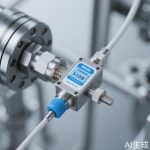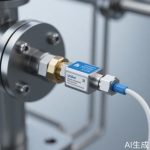In an era where data drives decisions, the humble temperature sensor module has emerged as an unsung hero. These compact yet powerful devices are the backbone of countless applications, from smart homes and industrial automation to healthcare and environmental monitoring. But what exactly are temperature sensor modules, and why are they becoming indispensable in our tech-driven world?
Temperature sensor modules are integrated circuits designed to measure temperature with high accuracy and reliability. Unlike standalone sensors, these modules often come with built-in signal conditioning, analog-to-digital converters, and communication interfaces, making them easy to integrate into larger systems. Their plug-and-play nature eliminates the need for complex calibration, saving time and reducing costs for engineers and developers.
One of the most compelling aspects of these modules is their versatility. In smart homes, they ensure your thermostat maintains the perfect ambiance, while in agriculture, they help monitor soil and ambient temperatures to optimize crop growth. Industrial settings rely on them for machinery health monitoring, preventing overheating and costly downtime. Even the medical field benefits, with temperature sensors playing a critical role in devices like incubators and diagnostic equipment.
Advancements in technology have pushed temperature sensor modules to new heights of precision and efficiency. Modern modules offer resolutions as fine as 0.1°C, with some capable of operating in extreme conditions ranging from -55°C to +150°C. Wireless connectivity options, such as Bluetooth and Wi-Fi, enable real-time data transmission to cloud platforms, facilitating remote monitoring and predictive maintenance. This leap in functionality is paving the way for smarter, more responsive ecosystems.
Despite their sophistication, temperature sensor modules are remarkably accessible. Many are designed with open-source platforms in mind, allowing hobbyists and startups to innovate without significant investment. Communities around platforms like Arduino and Raspberry Pi have developed extensive libraries and tutorials, democratizing access to advanced temperature sensing capabilities.
Looking ahead, the future of temperature sensor modules is bright. As the Internet of Things (IoT) continues to expand, these modules will become even more integral to connected devices. Innovations in energy harvesting could lead to self-powered sensors, while AI integration may enable predictive analytics far beyond current capabilities. The potential applications are limitless, from climate change research to personalized healthcare solutions.
In conclusion, temperature sensor modules are far more than just components; they are enablers of innovation. By providing accurate, reliable, and easy-to-use temperature monitoring, they empower industries and individuals alike to create smarter, safer, and more efficient systems. As technology evolves, these modules will undoubtedly continue to play a pivotal role in shaping the future.




Leave a Message